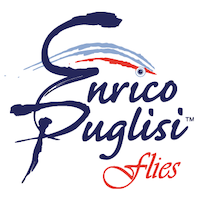Tying the Fleeing Crab

What's the Story?
The design of the Fleeing Crab in this configuration is attributed to Lenny Moffo of McKenzie Fly Tackle. A modified version of the classic Del Brown Merkin Crab, this fly places all of the rubber legs at the bend of the hook to trail the fly as is moves through the water, instead of being perpendicular to the hook shank. Rather than giving the appearance of a crab crawling across the bottom, this pattern mimics a crab trying to evade predators by quickly scuttling sideways through the water.
What's it Good For?
This is a great pattern to use for crab eating fish of all types including; redfish, permit, bonefish, and black drum. Pompano on the flats are a possibility as they scour the bottom in search of crabs or even sand fleas.
How to Fish It:
The Fleeing Crab should be cast and allowed to sink to the bottom far enough ahead of the searching fish so that the fly can be bumped ahead once your target gets within range. If a fish sees the crab hit the water and sink to the bottom or if the crab lands directly in line with the fish's direction of travel, often all that is needed is to wait for the fish to swim over and nose down for a meal. If the fly is overlooked, a slow strip will often get the attention needed.
While a very slow, steady approach, where you let the fish stumble upon the fly, is often the most effective for redfish, bonefish and black drum, different situations and different fish call for different retrieves. More aggressive fish may need short, rapid strips to give the impression that your crab is trying to escape danger once it has been spotted.
Tying Options
Using materials that are the color of the fish's natural forage will create the most lifelike offering, which is also often the most effective. Tan/brown, tan/brown/blue, tan/olive and black/purple have all proven to be work well. Altering the the size of your lead eyes or replacing them with bead chain will give greater flexibility when dealing with deeper or shallower water. If you go with lighter eyes, just make sure the fly still swims correctly and lands with the hook up. With the lead eyes tied on top of the hook, a properly tied fleeing crab will land on the bottom hook point up so is not prone to snagging on the bottom. If you will be using the fly near grass, oyster bars or other snags, consider adding a weed guard.
The body can be tied either on top of the hook shank (opposite the point) or underneath the hook shank (on the same side as the point). The fly is most often tied with the body on top of the hook shank and, with heavy enough lead eyes, this works fine. With lighter eyes, the fly may not flip over as desired. Moving the body to the underside of the hook shank, opposite they eyes, can help, as can extending the body slightly around the bend. We prefer to tie the body in opposite the hook shank but if you are just getting started and find this difficult tying on top of the hook shank will simplify the process.
Available on our Website:
This fly is available, ready to fish, on the Fleeing Crab page. If you'd like to tie it yourself, the Fleeing Crab Fly Tying Kit includes all the materials you will need.














